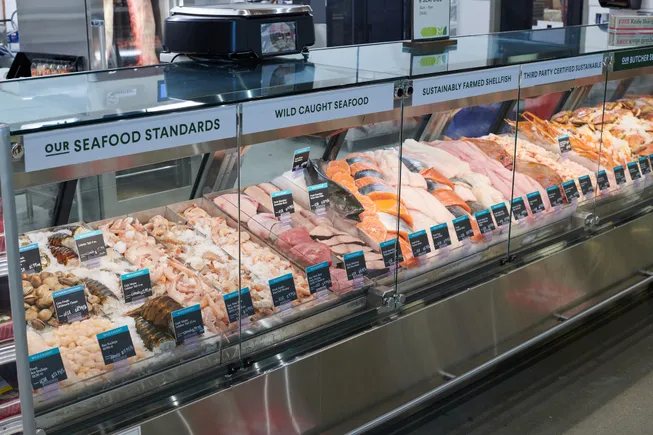Seafood sales in 2024 saw a decrease, but there is still a significant opportunity for growth within this category, especially with frequent seafood shoppers. According to FMI – The Food Industry Association’s latest Power of Seafood report, the number of frequent seafood shoppers has grown to 32% of consumers in the last five years. This group shops more frequently, has higher incomes, and creates larger baskets when purchasing seafood.
Rick Stein, vice president of fresh foods at FMI, emphasized the importance of converting more customers into occasional or frequent seafood shoppers. This can be achieved by dispelling the perception that seafood is expensive or complicated to prepare, as well as educating consumers on the health benefits of seafood.
Despite a drop in seafood prices last year, many shoppers still view seafood as a luxury purchase. The reasons for reducing seafood consumption frequency include inflation, prices compared to other proteins, and overall package prices. However, 81% of frequent seafood shoppers find seafood affordable.
Frequent seafood shoppers are typically affluent consumers with an average household income of $100,000 per year. They spend more on groceries compared to non-seafood consumers, making them a valuable customer base for grocers. These shoppers have positive perceptions of seafood due to its health benefits, easy preparation, affordability, and sustainability.
Grocers have the opportunity to highlight these benefits across customer demographics and offer convenient cooking methods and recipes. They can also provide tools and assistance for meal planning, both in-store and online. While only 44% of seafood consumers have purchased seafood online, digital platforms can serve as excellent communication channels to reach seafood consumers and promote seafood as an option online.
Despite supermarkets being the primary seafood store for consumers, they have lost ground to other retailers since 2020. Seafood counters have proven to be impactful in highlighting quality in the department, with around two-thirds of shoppers expressing a desire for their supermarket to have a seafood counter.
In conclusion, while seafood sales may have struggled in 2024, there is still a significant opportunity for growth within this category, especially with frequent seafood shoppers. Grocers have the chance to educate consumers, highlight the benefits of seafood, and offer convenient solutions to attract and retain seafood shoppers.


